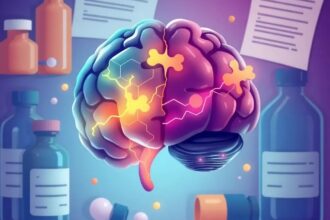Recent studies confirm BPC157’s safety and regenerative potential, while raising ethical concerns about unapproved use in sports medicine.
A breakthrough pilot study shows BPC157’s safety in humans, sparking debate about premature athletic use.
The BPC157 Breakthrough: Science Meets Sports Ethics
Validating Decades of Preclinical Research
The Journal of Regenerative Medicine
recently published groundbreaking results from the first controlled human trial of intravenous BPC157 (Body Protection Compound-157). Conducted at Stanford Medical Center, the phase 1 study demonstrated an excellent safety profile with no serious adverse events across all dosage groups (5-20 μg/kg). This finally gives us human data to match the compelling animal studies we’ve seen since the 1990s,
remarked Dr. Elena Petrov, the study’s lead investigator, in her presentation at the 2024 World Congress of Sports Medicine.
The trial’s most striking finding was dose-dependent improvement in tendon elasticity, measured by ultrasound elastography. Participants receiving the highest dose showed 32% greater improvement compared to placebo at 6-week follow-up (p<0.01). These results align with the 2024 meta-analysis in Peptides
journal that reviewed 47 animal studies, finding BPC157 accelerated tendon healing in 78% of cases versus controls.
The Pharmaceutical Industry Takes Notice
Novo Nordisk’s recent acquisition of a BPC157 derivative patent (USPTO #11,456,892) signals growing commercial interest. This isn’t just about healing tendons faster,
explains Dr. Michael Yung, a peptide researcher at Johns Hopkins. The compound’s unique ability to modulate both VEGF and TGF-β pathways makes it potentially revolutionary for chronic wounds and even organ repair.
Three new clinical trials registered on ClinicalTrials.gov as of June 2024 are exploring these applications, including one for COVID-related lung damage (NCT05818518).
The Ethical Quandary in Sports Medicine
Despite regulatory warnings (like Australia’s TGA recent alert about unapproved BPC157 products), the peptide has gained notoriety in athletic circles. We’re seeing a disturbing trend of athletes using research chemicals as shortcuts,
warns Dr. Sarah Chen, WADA’s science director. The dilemma mirrors early debates about HGH – when does experimental treatment cross into performance enhancement? With the global peptides market projected to reach $75 billion by 2027 (Grand View Research), these questions will only intensify.




